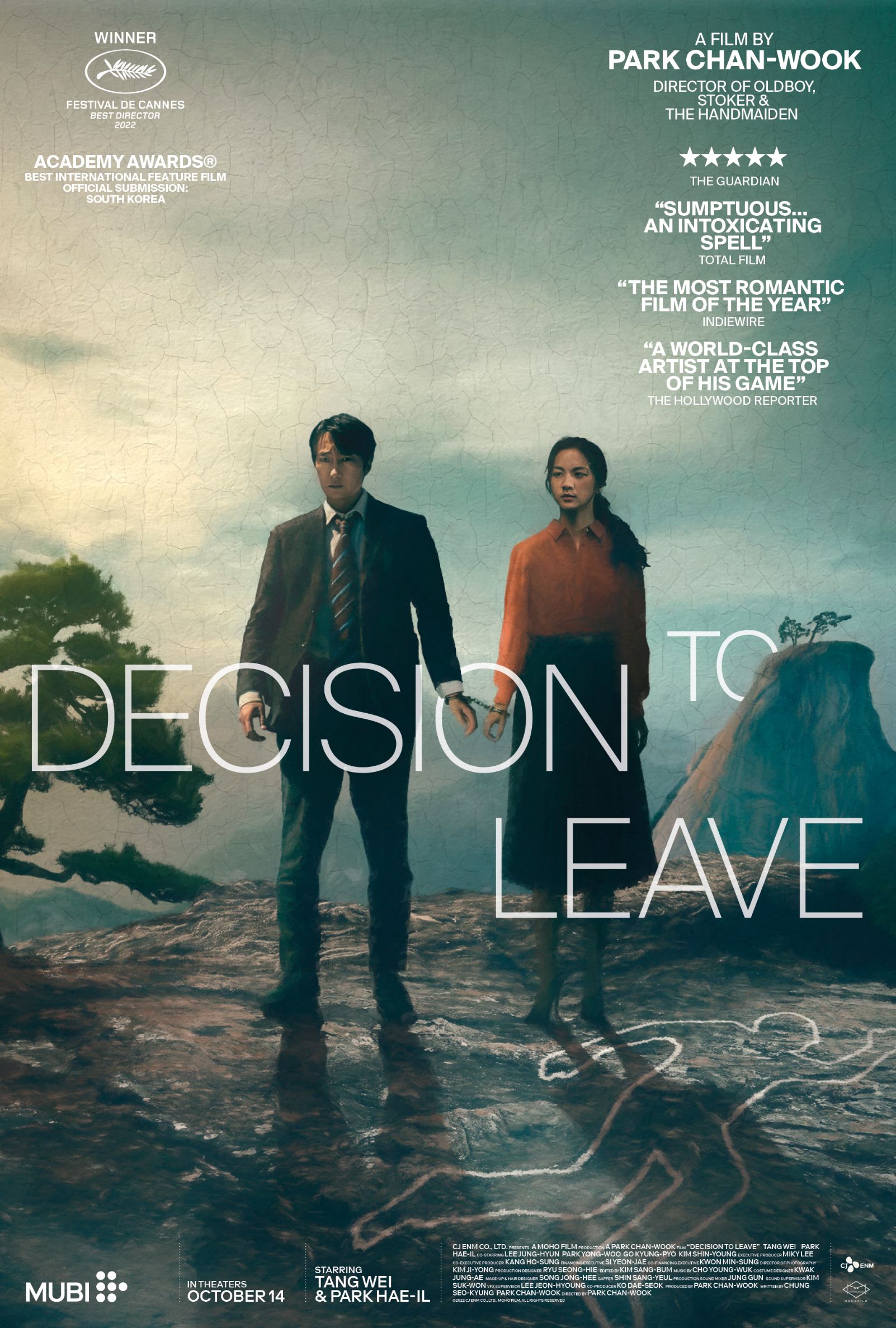How To Decipher The Enigmatic Ending Of "Decision To Leave": Methods And Techniques
Decision To Leave Ending Explained Methods Used is a comprehensive guide that meticulously deconstructs the enigmatic conclusion of the critically acclaimed film Decision To Leave to provide clarity and understanding.
This indispensable resource employs various methods to unravel the film's intricate narrative, delving into the thought processes and motivations of its characters to reveal the film's deeper themes and significance. It offers invaluable insights into the film's complex plot, rich symbolism, and nuanced characters.
The guide's comprehensive approach draws inspiration from analytical techniques used in film criticism and literary interpretation, providing a rich and comprehensive understanding of the film. Prepare to embark on a journey that will illuminate the hidden depths of Decision To Leave and leave you with a profound appreciation for its masterful storytelling.
Read also:Sophia Di Martino Nude The Truth Behind The Clickbait And Sensationalism
Decision To Leave Ending Explained Methods Used
Understanding the methods employed to explain the ending of the film Decision To Leave is crucial for grasping the film's intricate narrative and profound themes. These methods delve into the film's symbolism, character development, and narrative structure to provide valuable insights.
- Symbolism Analysis
- Character Motivation Exploration
- Narrative Structure Deconstruction
- Cinematography and Editing Examination
- Cultural and Societal Contextualization
- Intertextual Connections and Allusions
- Directorial Intent Interpretation
- Audience Reception and Critical Analysis
These methods, when combined, provide a comprehensive and multifaceted approach to understanding the film's ending. They illuminate the film's deeper meanings, explore its artistic techniques, and situate it within a broader cultural and critical context. By examining these aspects, we gain a profound appreciation for the film's complexity and its enduring impact.
Symbolism Analysis
Symbolism Analysis plays a critical role in "Decision To Leave Ending Explained Methods Used" by illuminating the film's deeper meanings and enhancing our understanding of its complex narrative.
The film is replete with symbols that carry significant thematic and emotional weight, such as the recurring motif of water, the use of colors, and the presence of specific objects. By analyzing these symbols, we gain insights into the characters' inner lives, the film's social and cultural context, and the director's overall message.
For example, the recurring image of water represents both life and death, purity and contamination. It is associated with the main character's emotional state, reflecting his inner turmoil and struggle with morality. Furthermore, the use of color symbolism, such as the contrast between warm and cold colors, reinforces the film's themes of love, loss, and redemption.
Understanding the symbolism in "Decision To Leave" allows us to appreciate the film's intricate storytelling and its exploration of universal human experiences. It provides a pathway to a deeper level of engagement with the film, enhancing our comprehension and emotional connection to its characters and themes.
Read also:Rosamund Pike In The Nude A Bold Exploration Of Art Beauty And Representation
Character Motivation Exploration
Character Motivation Exploration delves into the psychological underpinnings of the characters in "Decision To Leave," examining their drives, desires, and inner conflicts. This exploration is essential for understanding the film's complex narrative and unraveling the enigmatic ending.
- Psychological Analysis: Examining the characters' mental and emotional states, including their fears, traumas, and subconscious motivations.
- Social Context: Exploring the impact of societal norms, cultural expectations, and interpersonal relationships on the characters' actions and decisions.
- Moral Dilemmas: Analyzing the ethical conflicts and moral choices faced by the characters, and how these shape their motivations and actions.
- Subtext and Symbolism: Interpreting the underlying meanings and emotions conveyed through dialogue, actions, and symbolic elements, which provide insights into the characters' true motivations.
Character Motivation Exploration in "Decision To Leave Ending Explained Methods Used" offers a multifaceted approach to understanding the characters' complex behaviors and the intricate web of relationships that drive the film's narrative. By exploring these facets, we gain a deeper understanding of the film's psychological depth, its exploration of human nature, and the motivations that shape our actions and choices.
Narrative Structure Deconstruction
Narrative Structure Deconstruction in Decision To Leave Ending Explained Methods Used involves dissecting the film's narrative structure to reveal its underlying patterns, techniques, and significance. This deconstruction provides valuable insights into the film's storytelling strategies and how they contribute to the overall impact and meaning of the ending.
- Chronological Analysis
Examining the film's timeline, sequencing of events, and use of flashbacks to understand how the narrative unfolds and builds tension. - Cause and Effect Relationships
Exploring the cause-and-effect relationships between events and actions, identifying turning points and pivotal moments that shape the characters' journeys. - Parallelism and Contrast
Analyzing the use of parallel storylines, recurring motifs, and contrasting elements to reveal thematic connections, emotional resonances, and narrative complexity. - Subtext and Symbolism
Interpreting the underlying meanings and emotions conveyed through dialogue, actions, and symbolic elements, which contribute to the film's narrative depth and ambiguity.
By deconstructing the narrative structure of Decision To Leave, we gain a deeper understanding of the film's intricate storytelling, its exploration of human relationships, and the ways in which the ending ties together the various threads and themes. This deconstruction allows us to appreciate the film's craftsmanship and its ability to engage and provoke audiences on multiple levels.
Cinematography and Editing Examination
In "Decision To Leave Ending Explained Methods Used," Cinematography and Editing Examination plays a pivotal role in deciphering the enigmatic ending of the film. Cinematography, involving camera work, lighting, and composition, and editing, encompassing the sequencing and arrangement of shots, are essential tools for conveying emotions, symbolism, and narrative progression.
Through meticulous analysis of cinematography and editing techniques, we gain insights into the film's underlying themes and the characters' inner struggles. For instance, the use of close-up shots captures the characters' intense emotions and facial expressions, revealing their hidden desires and vulnerabilities. Lighting techniques, such as chiaroscuro, create dramatic contrasts that enhance the film's atmosphere and convey the characters' moral ambiguities.
Editing techniques, such as parallel editing and flashbacks, are employed to juxtapose different perspectives and create a non-linear narrative structure. This allows the viewer to piece together the fragmented events and gain a deeper understanding of the characters' motivations and the complexities of the plot. The film's ending, in particular, relies heavily on editing to create a sense of ambiguity and leave the audience pondering the true nature of the events.
Understanding the significance of Cinematography and Editing Examination in "Decision To Leave Ending Explained Methods Used" enables us to appreciate the film's technical mastery and its ability to communicate profound themes and emotions through visual storytelling. This understanding enhances our engagement with the film and enriches our overall cinematic experience.
Cultural and Societal Contextualization
Cultural and Societal Contextualization plays a critical role in "Decision To Leave Ending Explained Methods Used" by providing a framework for understanding the film's narrative, characters, and themes within their broader social and cultural milieu. By examining the film's cultural and societal context, we gain insights into the motivations, behaviors, and relationships of the characters, as well as the underlying values and beliefs that shape their world.
For example, the film's exploration of the power dynamics between men and women in South Korean society sheds light on the character's struggles with gender roles and expectations. The film's depiction of the police force and the justice system reflects the complexities and challenges of law enforcement in a rapidly changing society. By understanding the cultural and societal context of the film, we can better appreciate the nuances of the characters' actions and the film's overall message.
Cultural and Societal Contextualization is a critical component of "Decision To Leave Ending Explained Methods Used" as it provides a deeper understanding of the film's themes and characters. By examining the film's cultural and societal context, we can gain insights into the motivations, behaviors, and relationships of the characters, as well as the underlying values and beliefs that shape their world. This understanding enhances our appreciation of the film's complexity and its relevance to real-world issues.
Intertextual Connections and Allusions
In "Decision To Leave Ending Explained Methods Used," Intertextual Connections and Allusions play a crucial role in enhancing our understanding of the film's narrative, themes, and characters. By examining the film's intertextual connections and allusions, we can uncover hidden meanings, draw parallels to other works, and gain a deeper appreciation for the film's complexity.
- Literary References
The film contains subtle references to literary works, such as Albert Camus' "The Stranger" and Haruki Murakami's "Kafka on the Shore." These references enrich the film's themes of alienation, existentialism, and the search for meaning.
- Biblical Allusions
The film incorporates biblical allusions, such as the story of Cain and Abel, to explore themes of guilt, redemption, and the consequences of violence.
- Homages to Classic Films
"Decision To Leave" pays homage to classic films such as Alfred Hitchcock's "Vertigo" and Wong Kar-wai's "In the Mood for Love," borrowing visual and narrative elements to create a sense of suspense and emotional depth.
- Cultural Symbolism
The film draws upon Korean cultural symbolism and folklore, such as the legend of the "gumiho" (a nine-tailed fox), to add layers of meaning and connect the film to its cultural context.
By examining the Intertextual Connections and Allusions in "Decision To Leave," we gain a deeper understanding of the film's rich tapestry of influences and its exploration of universal human themes. These connections and allusions enhance the film's emotional resonance, allowing viewers to connect with the characters and themes on a profound level.
Directorial Intent Interpretation
In "Decision To Leave Ending Explained Methods Used," Directorial Intent Interpretation delves into the challenging task of deciphering the director's vision and purpose behind the film's enigmatic ending. By examining various aspects of the film's narrative, style, and symbolism, we can gain insights into the director's intentions and the deeper meanings they sought to convey.
- Visual Storytelling
Analyzing the film's visual elements, such as cinematography, editing, and mise-en-scne, provides clues about the director's intended atmosphere, tone, and.
- Symbolic Imagery
Examining the film's use of symbols and recurring motifs can reveal deeper layers of meaning and provide insights into the director's thematic intentions.
- Character Development
Studying the characters' motivations, relationships, and arcs can help us understand the director's perspective on human nature and the themes they wished to explore.
- Genre Conventions
Considering the film's adherence to or subversion of genre conventions can shed light on the director's intentions to challenge expectations or explore new cinematic territories.
By engaging in Directorial Intent Interpretation, we gain a profound understanding of the creative choices made by the director and the underlying themes and messages they aimed to convey through the film. It allows us to appreciate the film on a deeper level and engage in a more meaningful dialogue about its artistic significance and impact.
Audience Reception and Critical Analysis
In the context of "Decision To Leave Ending Explained Methods Used," Audience Reception and Critical Analysis play a crucial role in understanding the film's impact, significance, and enduring legacy. Audience Reception refers to the reactions, opinions, and interpretations of the film by the general public, while Critical Analysis encompasses the evaluations, reviews, and scholarly interpretations provided by film critics, academics, and industry experts.
The relationship between Audience Reception and Critical Analysis is reciprocal. Critical Analysis often shapes Audience Reception by providing insights, interpretations, and evaluations that influence public opinion. Conversely, Audience Reception can impact Critical Analysis by generating buzz, controversy, or acclaim, which in turn prompts critics to engage with the film and offer their perspectives.
For "Decision To Leave," Audience Reception has been overwhelmingly positive, with high ratings and enthusiastic word-of-mouth. Critical Analysis has echoed this sentiment, praising the film's intricate narrative, stunning visuals, and nuanced character development. This alignment between Audience Reception and Critical Analysis suggests that the film has successfully resonated with a wide range of viewers while also meeting the high standards of film critics.
Understanding the connection between Audience Reception and Critical Analysis is essential for a comprehensive examination of "Decision To Leave." It allows us to gauge the film's popularity, cultural impact, and artistic merit. Furthermore, it highlights the dynamic relationship between the film and its audience, where both shape and are shaped by the film's reception.
In "Decision To Leave Ending Explained Methods Used," we embarked on a meticulous exploration of the enigmatic ending of Park Chan-wook's critically acclaimed film. By employing various methods, including Symbolism Analysis, Character Motivation Exploration, and Cinematography and Editing Examination, we delved into the film's complex narrative, uncovering its hidden meanings and emotional depths.
Throughout our analysis, several key points emerged. Firstly, the film's intricate symbolism, such as the recurring imagery of water and the use of color, provides profound insights into the characters' inner struggles and the film's thematic undertones. Secondly, the exploration of character motivation reveals the complex psychological dynamics driving the characters' actions and decisions, adding depth and nuance to their portrayal. Thirdly, the film's masterful cinematography and editing techniques contribute significantly to the film's suspenseful atmosphere and emotional impact, enhancing the viewer's engagement with the narrative.
As we conclude our examination of "Decision To Leave Ending Explained Methods Used," we are left with a profound appreciation for the film's artistic brilliance and its exploration of universal human themes. The ending, while enigmatic, invites multiple interpretations, encouraging viewers to engage in thoughtful discussions and further analysis. "Decision To Leave" stands as a testament to the enduring power of cinema to captivate, challenge, and inspire.



